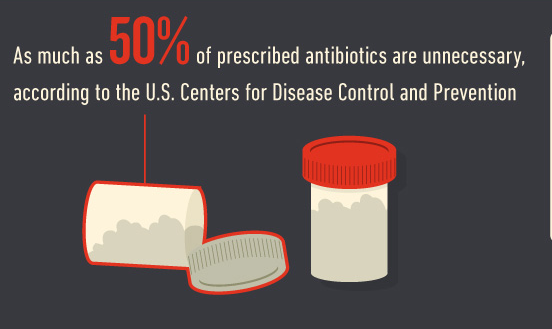Antibiotics: Everything You Wanted To Know About What They Are And When You Need Them

Antibiotics have recently been on the front page of newspapers throughout the world. Last month, the World Health Organization (WHO) released a report explaining how the currents levels of antibiotic resistance are now a “major global threat” to public health. Before finding a solution to the problem, it may be beneficial to understand exactly why antibiotics are and how they are both helpful and harmful to our health.
What are antibiotics?
Penicillin, the very first antibiotic, was discovered accidentally by Sir Alexander Flemming in 1928. Since the 1930s penicillin, along with others, has saved countless lives. Antibiotics are used to treat bacterial infections as well as some parasites and fungal infections. They work by either stopping the bacteria from reproducing or killing them, Medical News Today reported. Antibiotics are usually taken orally but can also be injected or applied directly to your body. Common side effects that may occur when on a course of antibiotics are diarrhea, nausea, or fungal infections.
When do we need them?
Antibiotics only treat bacteria, and some fungi and parasites. For viruses such as the cold or flu, antibiotics are unnecessary. The body’s immune system works quite well on its own. It often destroys bacteria before they can multiply and even cause symptoms. Sometimes, however, our immune systems are not enough and need some extra help, Medical New Today reported. This is when antibiotics are used. Unfortunately, they have been vastly overused. This has led to the increasing ineffectiveness of many antibiotics.
According to information provided by Carrington’s pharmacy training program, nearly half of all prescribed antibiotics are unnecessary. "Research has shown that several common infections do not require antibiotics. Yet we continue to unnecessarily take them," said Amanda Helberg, a physician assistant at Scott & White Lago Vista Clinic in Lago Vista, Texas, to CNN. "This overuse of antibiotics has led to 'superbugs,' and now bacterial resistance is on the rise.”

What May Happen Without Them
When used correctly, antibiotics save thousands of lives each year. We cannot simply ban their use. Without antibiotics, thousands of people will die from conditions that were before easily treated. For example, before antibiotics nine in 10 children died from bacterial meningitis, and the survivors suffered a variety of disabilities. Today, only one in 10 children dies from the infection, Carrington reported. Currently antibiotic-resistant bacteria infect over two million Americans annually, and of these, over 23,000 die from their infections. MRSA, a drug-resistant strain of the common staph infection, alone kills 11,000 people each year.
To solve this problem, the WHO has called for a combined global effort to help curb the misuse of antibiotics and develop new methods to treat infection. One promising new development was the recent discovery of a molecule that can stop bacteria from forming a dangerous biofilm. Scientists are also working with phages, or viruses that feed on bacteria, as a way to fight infection without antibiotics.

To view Carrington College Group's full chart on the good, the bad, and the ugly of antibiotics, please click here.



























